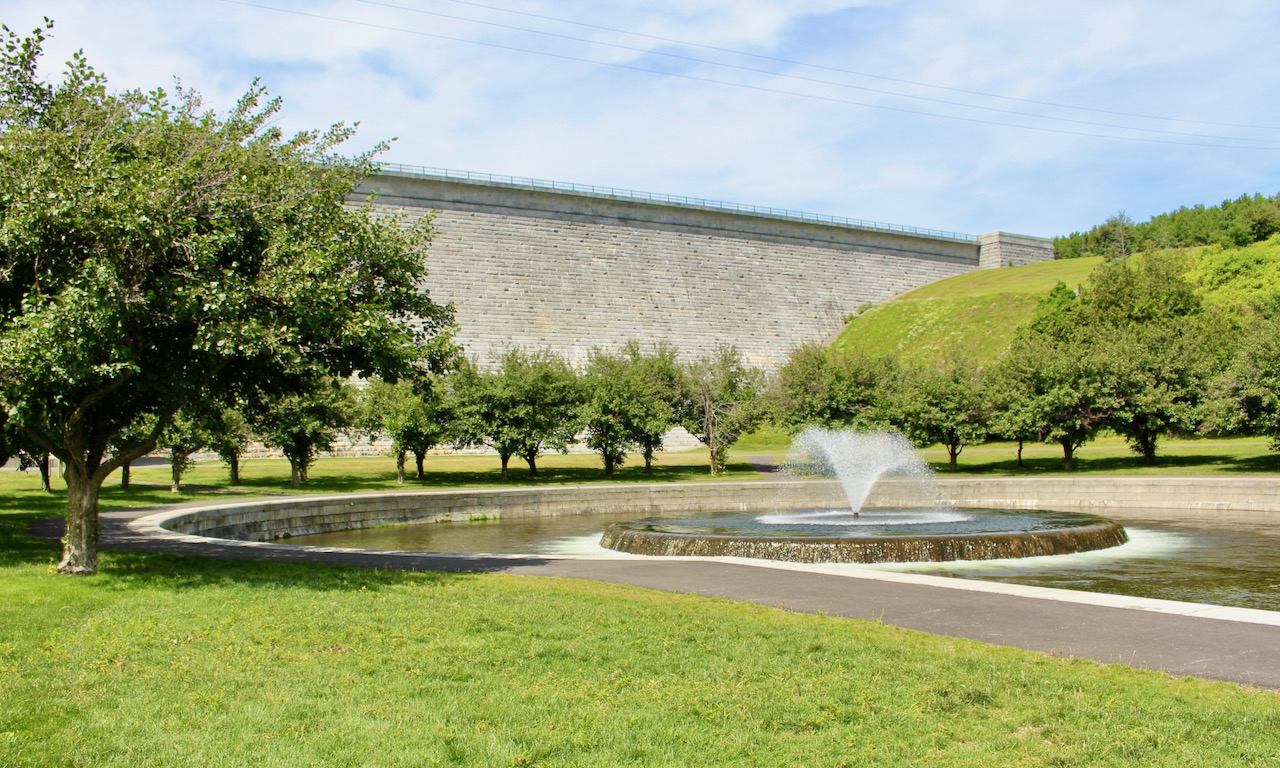Built to service twenty-nine municipalities within a ten-mile radius of the Massachusetts State House in Boston, Wachusett Reservoir, now the second largest body of water in the Commonwealth, was the solution to address the unanticipated water needs in the 1890s brought on by the commonplace use of indoor plumbing. While four bodies of water were considered, only the Nashua River met the prime consideration of the Metropolitan Water Board’s Chief Engineer—that the new water source should be gravity-operated and not require filtration.
In 1897, the South Branch of the Nashua River was impounded above the town of Clinton by the construction of the 205-foot-tall Wachusett Dam. Six-and-one-half-square miles were flooded in Clinton, Boylston, West Boylston, and Sterling with its water conveyed by the Wachusett/Weston Aqueduct to Weston Reservoir and then by pipeline to Chestnut Hill Reservoir, the hub of the system at the time, and Spot Pond Reservoir. Work was completed in 1905 and the reservoir was first filled in May 1908. One of the few unfiltered water supplies in the country, the sixty-five-billion-gallon reservoir covers 108 square miles with thirty-seven miles of shoreline.
Recreational activities, including hiking, bird watching, snowshoeing and shoreline fishing, are regulated and limited to protect contamination of the drinking water supply for three million people. Climb down the 148 steps beside the dam to access a small, scenic park before the Wachusett Dam. The walkway across the dam is opened to the public on rare occasions.
Stillwater Farm in Sterling, managed by Massachusetts Department of Conservation and Recreation (DCR), offers educational, interpretive programs.

